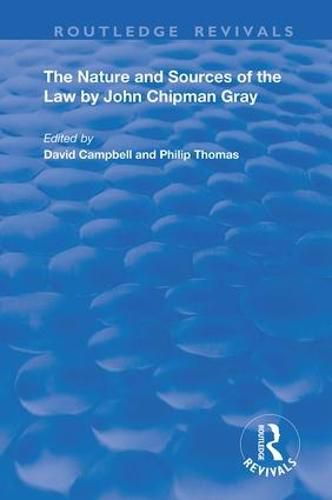Readings Newsletter
Become a Readings Member to make your shopping experience even easier.
Sign in or sign up for free!
You’re not far away from qualifying for FREE standard shipping within Australia
You’ve qualified for FREE standard shipping within Australia
The cart is loading…






First published in 1909 and then again in 1997. John Chipman Gray (1839-1915) spent the greater part of his professional life as a professor at Harvard Law School where he taught property, trusts and future interests. The Nature and Sources of the Law was first published in 1909. The book is divided into two parts which respectively look at ‘Nature’ and ‘Sources’. In Part I, Gray warns that the study of jurisprudence, in isolation, could lead to dogmatism. Rather he advocates the structure offered by common law with its reliance on flexible interpretations of statutes, the use of all relevant cultural inputs and a highly adaptable approach to the resolution of disputes. Gray, in Part II, turns his attention to sources of the law and begins with statutes. Here he asserts that judges are the ones who actually turn into law, going against the conventional scholarship that judges merely interprets statutes. He also extensively examines the influence of tradition and the common law.
$9.00 standard shipping within Australia
FREE standard shipping within Australia for orders over $100.00
Express & International shipping calculated at checkout
Stock availability can be subject to change without notice. We recommend calling the shop or contacting our online team to check availability of low stock items. Please see our Shopping Online page for more details.
First published in 1909 and then again in 1997. John Chipman Gray (1839-1915) spent the greater part of his professional life as a professor at Harvard Law School where he taught property, trusts and future interests. The Nature and Sources of the Law was first published in 1909. The book is divided into two parts which respectively look at ‘Nature’ and ‘Sources’. In Part I, Gray warns that the study of jurisprudence, in isolation, could lead to dogmatism. Rather he advocates the structure offered by common law with its reliance on flexible interpretations of statutes, the use of all relevant cultural inputs and a highly adaptable approach to the resolution of disputes. Gray, in Part II, turns his attention to sources of the law and begins with statutes. Here he asserts that judges are the ones who actually turn into law, going against the conventional scholarship that judges merely interprets statutes. He also extensively examines the influence of tradition and the common law.